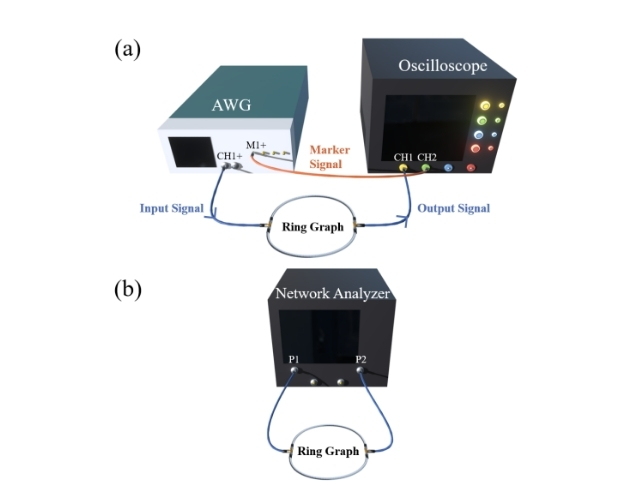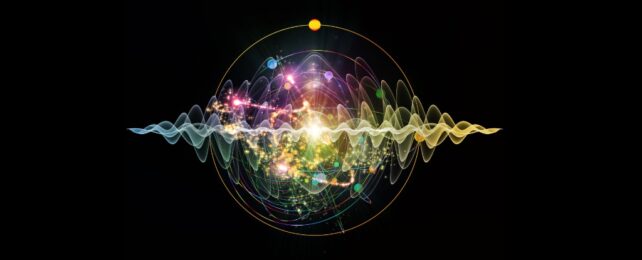For the first time, researchers have seen how light behaves during a mysterious phenomenon called 'imaginary time'.
When you shine light through almost any transparent material, the gridlock of electromagnetic fields that make up the atomic alleys and side streets will add a significant amount of time to each photon's commute.
This delay can tell physicists a lot about how light scatters, revealing details about the matrix of material the photons must navigate. Yet until now, one trick up the theorist's sleeve for measuring light's journey – invoking imaginary time – has not been fully understood in practical terms.
An experiment conducted by University of Maryland physicists Isabella Giovannelli and Steven Anlage has now revealed precisely what pulses of microwave radiation (a type of light that exists outside the visible spectrum) do while experiencing imaginary time inside a roundabout of cables.
Related: Light Squeezed Out of Darkness in Surprising Quantum Simulation
Their work also demonstrates how imaginary numbers can describe a very real and measurable process.

Imaginary numbers are mathematically convenient tools for solving equations that describe physical phenomena. Handy as they are, they're as abstract as the square root of a negative number, having no practical equivalence in our everyday experience of reality.
For pulses of light waves dilly-dallying through a chunk of matter, imaginary numbers have helped solve transmission time delays, but the exact behaviors responsible for their role have never been systematically examined in experiments.
Technically, single photons of light can only ever move at a single, constant speed. Yet interactions with surrounding electromagnetic fields can delay a wave's overall journey in complex ways. In the context of light pulses, the actions of collections of waves can be sped up and slowed down in a similar manner.
This means a pulse of light waves can be negative, technically moving faster than its individual photons. Positive and negative values – both real and imaginary – can paint a picture of the photonic traffic conditions making up a material.
The experiment's apparatus consisted of a pair of coaxial cables connected in a circle, representing a simple and well-understood network of pathways for pulses of microwave light to travel through. They also made use of cutting-edge oscilloscopes that could detect incredibly small shifts in frequency.

By tinkering with the pulses and measuring the effects, Giovannelli and Anlage could untangle exactly how the patterns of waves within each pulse change with respect to values predicted by real and imaginary components of their equations.
"It's sort of like a hidden degree of freedom that people ignored," Anlage explained to Karmela Padavic-Callaghan at New Scientist.
"I think what we've done is bring it out and give it a physical meaning."
The imaginary numbers weren't describing some bizarre microwave daydream, but rather a tiny shift in the carrier wave's frequency as it passes through a material thanks to the way the transmitted pulse was absorbed.
Where previously this figure was ignored as, well, imaginary, it can now be connected to the physical operations that allow pulses of light waves to move quicker than the very photons they're composed of.
Just imagine.
This research has been accepted for publication by Physical Review Letters.
